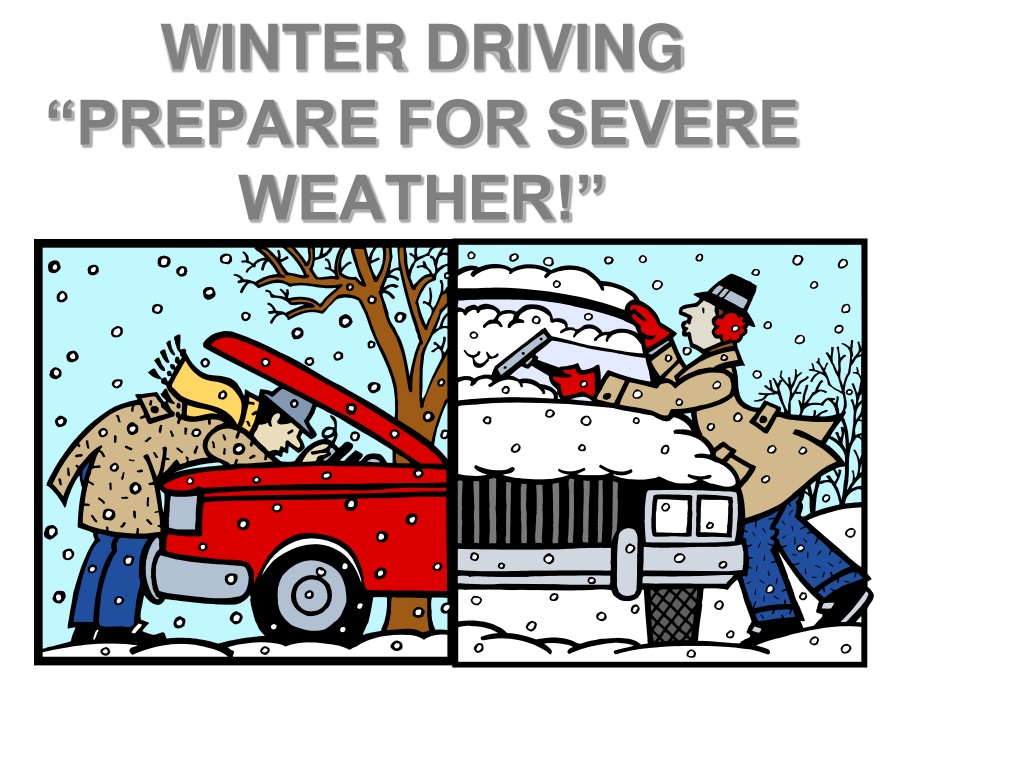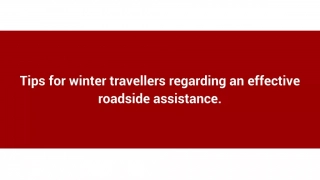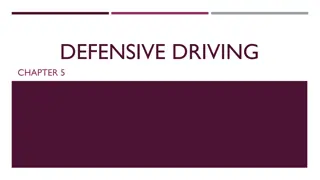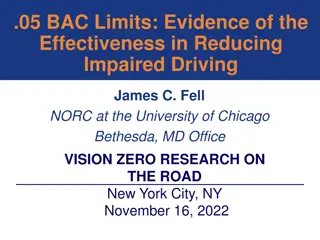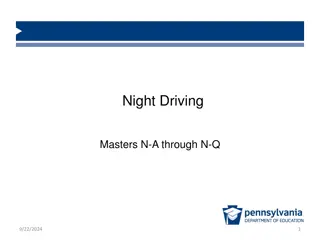Winter Driving Safety Tips and Risk Management Decisions
Prepare your vehicle for winter weather conditions by checking wipers, fluids, batteries, tires, and having a winter car kit. Warm up and clean off your vehicle thoroughly before driving. Make risk management driving decisions and drive with caution during winter. Remember a tragic incident involving a service member in 1998 due to poor risk management in winter conditions. Follow driving techniques such as driving at reduced speeds and maintaining safe distances from other vehicles.
Download Presentation

Please find below an Image/Link to download the presentation.
The content on the website is provided AS IS for your information and personal use only. It may not be sold, licensed, or shared on other websites without obtaining consent from the author. Download presentation by click this link. If you encounter any issues during the download, it is possible that the publisher has removed the file from their server.
E N D
Presentation Transcript
WINTER DRIVING PREPARE FOR SEVERE WEATHER!
PREPARE FOR WINTER WEATHER Wipers - Good working order Windshield Washer Fluid - Fill Up Anti-freeze - 50% water 50% Coolant Battery & Belts - Check condition Oil - Replace your oil with Winter grade oil Tires - Check treads, pressure and owners manual recommendations Ice Scraper - A necessity
BEFORE TRIPS: PACK WINTER CAR KIT SNOW BRUSH W/ SCRAPER FLASHLIGHT W/ BATTERIES BLANKET MITTENS, SOCKS & HAT SMALL SHOVEL SACK OF SAND OR KITTY LITTER JUMPER CABLES HAZARD SIGN, FLARES OR FLAG WINDSHIELD WASHER FLUID
WARM-UP AND CLEAN-OFF 1. IDLE ENGINE - DO NOT RACE ENGINE! 2. CLEAN OFF VEHICLE COMPLETELY! - CLEAN ALL LIGHTS - SCRAPE ALL WINDOWS AND MIRRORS - SWEEP ALL THE SNOW OFF THE VEHICLE Good all around visibility is important!!!!! Good all around visibility is important!!!!! remember, remember, BEING IN A HURRY WILL RESULT BEING IN A HURRY WILL RESULT IN ACCIDENTS DOWN THE ROAD! IN ACCIDENTS DOWN THE ROAD!
RISK MANAGEMENT DRIVING DECISIONS Is my car equipped for the weather? Can I make this trip later? What would be the safest route? Am I prepared for emergencies?
DECEMBER 23, 1998: SERVICE MEMBER DEPARTED FORT HOOD DURING A WINTER WEATHER WARNING. FALLING SNOW MIXED WITH SLEET. ROADS PREDICTED TO HAVE SEVERE ICING. WHILE PASSING AN EIGHTEEN WHEELER ON I-35, SERVICE MEMBER LOST CONTROL OF HIS VEHICLE AND STRUCK A BRIDGE GUARDRAIL, THEN VEERED INTO THE PATH OF THE EIGHTEEN WHEELER. THE SOLDIER WAS KILLED. POOR RISK MANAGEMENT OR BAD JUDGEMENT?
DRIVING TECHNIQUES Drive at reduced speeds so you can stop quicker. Give turn signals sooner than usual. This gives other drivers more time to react. Pump your brakes to warn of your intention to stop. Maintain at least triple the normal distance from the vehicle ahead. (6 seconds)
BLACK ICE DANGEROUS BECAUSE YOU CAN T SEE IT! COMMON AREAS YOU FIND IT: 1. Bridges/Overpasses/Underpasses 2. Shaded areas.
BLACK ICE REACTION DO NOT PANIC! MAKE NO SUDDEN CHANGES IN SPEED OR DIRECTION EASE OFF ACCELERATOR STEER IN DIRECTION THAT THE REAR OF THE VEHICLE IS SKIDDING
FRESH SNOW CAN CONCEAL ICY ROADS
_ _ _ _ SKIDS Result from unexpected forces: 1. Black Ice 2. Driving to fast for conditions 3. Sudden steering corrections or braking 4. Sudden accelerations
_ _ _ _ SKIDS(CONTINUED) If your vehicle begins to skid, take the following actions: 1. Front end skids - Release the brake and let the front wheels roll freely to regain traction and steering control. 2. Rear end skids - Take foot off of accelerator and turn wheels in the direction that the rear of the vehicle is skidding, and pump brakes lightly.
FOG WHEN DRIVING IN FOG, USE LOW-BEAM HEADLIGHTS, or STOP, GET OFF THE ROADWAY, AND WAIT!!
!!! DANGER !!! CARBON MONOXIDE POISONING Each year 1,500 people are killed in the U.S. by carbon monoxide, approximately 900 of whom die in their homes. More than 10,000 are exposed to levels so dangerous that medical attention is required.
CARBON MONOXIDE Attributes/Effects 1. 1. Odorless & Colorless Odorless & Colorless 2. 2. Nausea, Headache, Dizziness Nausea, Headache, Dizziness 3. 3. Causes Drowsiness Causes Drowsiness 4. 4. CAN BE FATAL CAN BE FATAL
CARBON MONOXIDE Prevention 1. Never run engine in an enclosed area 2. Check exhaust (muffler) for leaks
BEFORE TRIPS: CHECK BATTERY ANTIFREEZE WIPERS & FLUID IGNITION SYSTEM THERMOSTAT LIGHTS HAZARD LIGHTS EXHAUST SYSTEM HEATER BRAKES DEFROSTER OIL LEVEL
Brake System To make an emergency stop on a slippery road Regular Brakes Pump the Brake Pedal. Anti-lock Brakes (ABS) Press down and hold. The ABS will pump for you.
Drive System Rear Wheel Drive Pushes and Front Wheel Drive Pulls The systems may feel a little different, but always steer in the direction of the skid, and make gentle corrections to regain control.
KEY DRIVING TIPS ALLOW MORE TIME TO TRAVEL MAINTAIN MORE SPACE DRIVE WITH YOUR LIGHTS ON WEAR SAFETY BELTS LOOK WELL AHEAD ANTICIPATE PROBLEMS
STUCK IN SNOW CLEAR A PATH STRAIGHTEN FRONT WHEELS USE ABRASIVE MATERIALS UNDER WHEELS GENTLE PRESSURE ON ACCELERATOR DON T SPIN WHEELS ROCKING THE VEHICLE CHECK OWNER S MANUAL LAST RESORT
SUMMARY REMEMBER THE THREE P s - PREPARE FOR THE TRIP - PROTECT YOURSELF - PREVENT CRASHES ON THE ROAD SLOW DOWN! GIVE DISTANCE CLEAN OFF WINDOWS - SEE CLEAN OFF ALL LIGHTS AND TURN LIGHTS ON - BE SEEN
